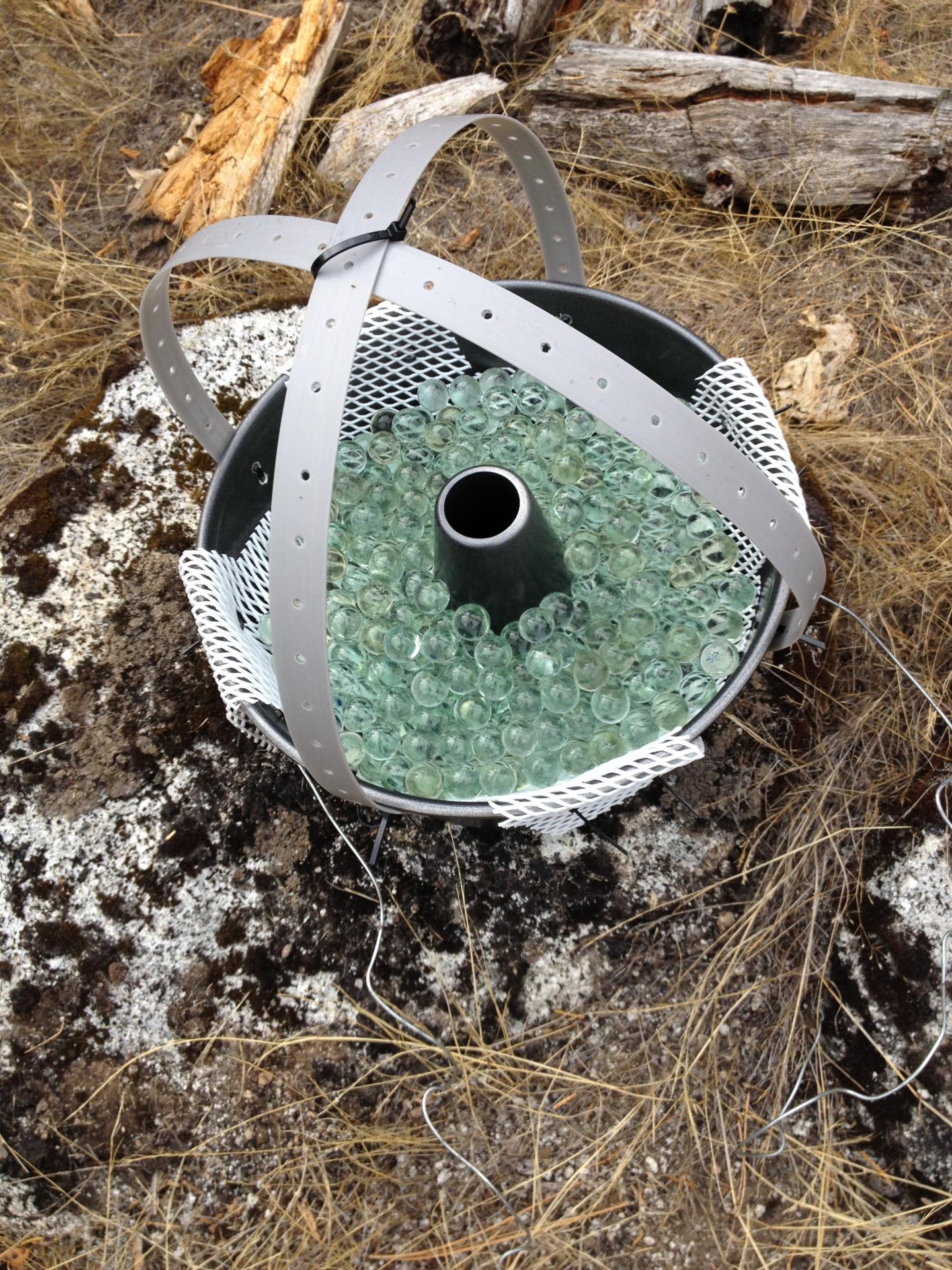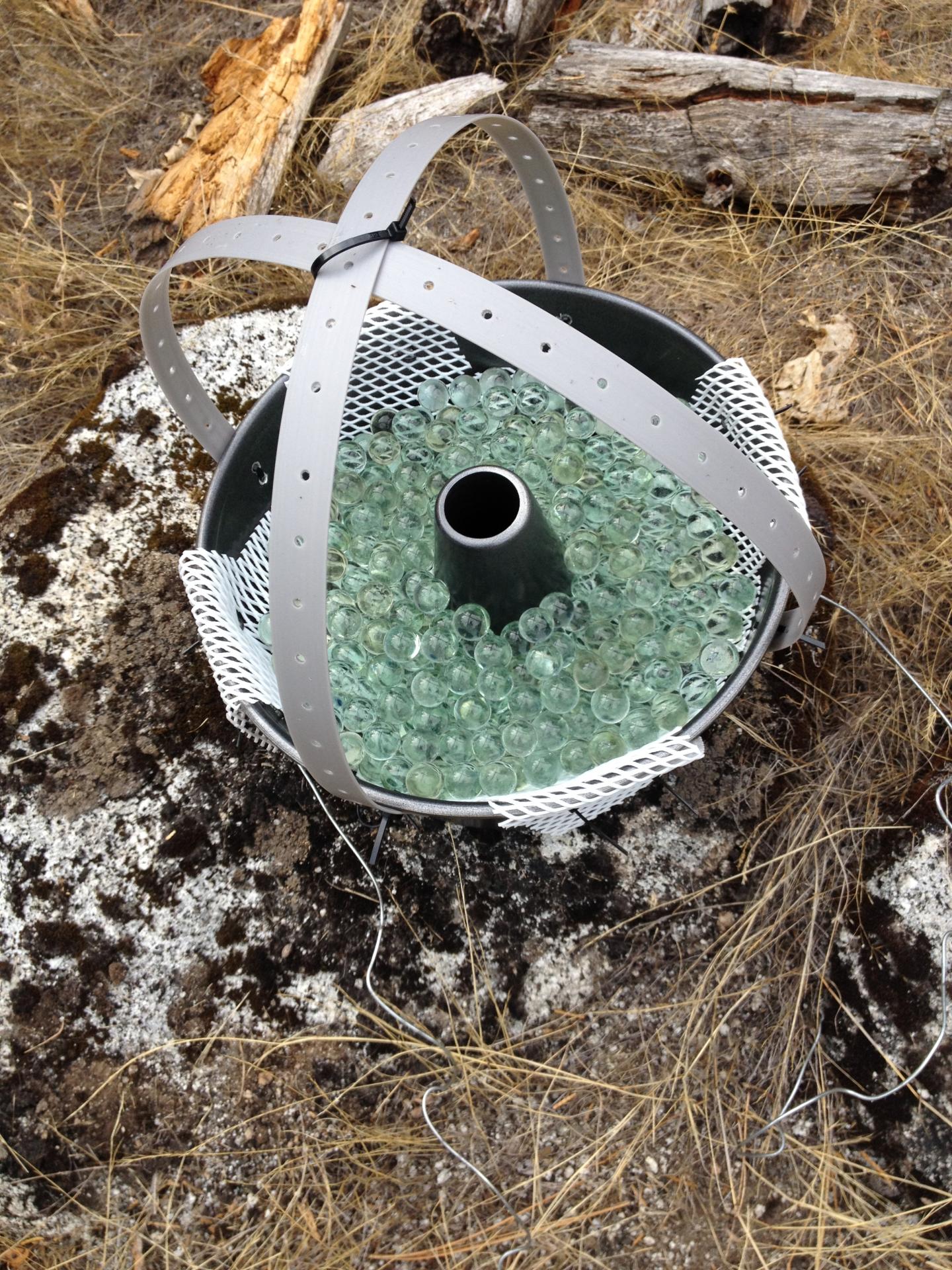
Credit: Chelsea Carey
RIVERSIDE, Calif. — Dust from as far away as the Gobi Desert in Asia is providing more nutrients than previously thought for plants, including giant sequoias, in California's Sierra Nevada mountains, a team of scientists, including several from the University of California, Riverside, have found.
The scientists found that dust from the Gobi Desert and the Central Valley of California contributed more phosphorus for plants in the Sierra Nevadas than bedrock weathering, which is breaking down of rock buried beneath the soil. Phosophorus is one of the basic elements that plants need to survive, and the Sierra Nevadas are considered a phosphorus-limited ecosystem.
"In recent years it has been a bit of mystery how all these big trees have been sustained in this ecosystem without a lot of phosphorus in the bedrock," said Emma Aronson, an assistant professor of plant pathology and microbiology at UC Riverside. "This work begins to unravel that mystery and show that dust may be shaping this iconic California ecosystem."
Aronson is a co-author of a just-published paper in the journal Nature Communications about the research. Two other scientists with UC Riverside ties are co-authors: Chelsea Carey, a former post-doctoral researcher in Aronson's lab; and Jon Botthoff, a field technician at the university's Center for Conservation Biology.
The study may help scientists predict the impacts of climate change which is expected to increase drought and create more desert conditions around the world, possibly including California. If that happens, based on these findings, scientists expect a lot more dust moving in the atmosphere, and likely bringing phosphorus and important nutrients to far flung mountainous ecosystems.
Nutrients such as carbon, nitrogen and phosphorus regulate the distribution of life across Earth's surface. Therefore it is important to understand the different sources of nutrients, including underlying bedrock and wind-spread dust. Quantifying the importance of dust, which is sensitive to changes in climate and land use, is crucial for predicting how ecosystems will respond to global warming and greater use of the land.
Little is known about the role of dust in mountainous forest ecosystems, such as the Sierra Nevadas. To change that, the researchers quantified the relative importance of dust and bedrock in ecosystem nutrient supply across four sites of increasing elevation, from about 1,300 to 8,800 feet, in the Sierra Nevadas, just east of Merced.
They then combined dust they collected with existing erosion data at the same location. They captured the dust using homemade dust collectors, which consisted of non-stick bundt pans filled with glass marbles to keep the dust from blowing out. The pans were attached to 6-foot poles to prevent dust kicked up by the researchers from entering the pans.
The researchers studied the isotopic signatures in several elements in the dust to determine the place of origin of the dust. The isotopes act a fingerprint for source of origin.
The percentage of Asian dust ranged from 20 percent on average at the lowest elevation, to 45 percent on average at the highest elevation. The percentages were higher at the higher elevation sites because dust tends to travel high in the air stream and not fall unless it hits an object, such as a mountain.
The researchers found that the amount of dust from Central Valley sources was greater at lower elevations compared to higher elevations. That was expected, but they also found that more Central Valley dust was entering higher elevations later in the dry season than just after the spring rains.
"Considering we took our measurements in 2014, in the middle of the drought, this makes us think that the drought is a factor here." Aronson said.
The researchers believe their findings will hold true for other mountainous ecosystems around the world and have implications for predicting forest response to changes in climate and land use.
###
They conducted the field work in one of the nine National Science Foundation Critical Zone Observatories, which are environmental laboratories focused on interconnected chemical, physical and biological processes. The research was supported by the National Science Foundation.
The Nature Communications paper is called "Dust outpaces bedrock in nutrient supply to montane forest ecosystems." In addition to Aronson, Carey and Botthoff, the authors are: Sarah Aciego, Molly Blakowski and Sarah Aarons, all of the University of Michigan; Stephen Hart and Nicholas Dove, both of UC Merced; and Cliff Riebe and Kenneth Sim, both of the University of Wyoming.
Media Contact
Sean Nealon
[email protected]
951-827-1287
@UCRiverside
http://www.ucr.edu
############
Story Source: Materials provided by Scienmag





